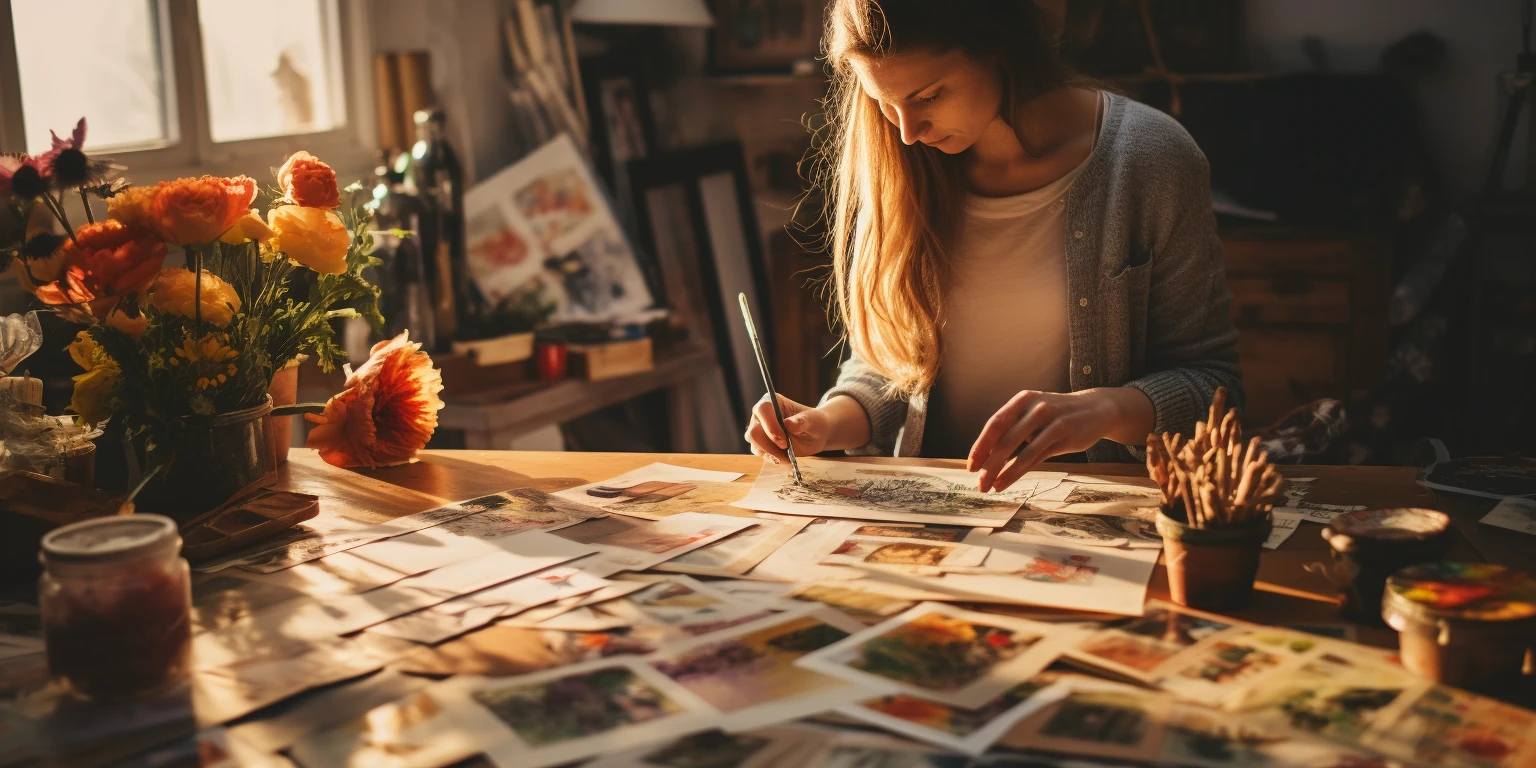In the quiet corners of a homebound retreat, the art of scrapbooking emerges not just as a creative outlet but as a comforting balm for the soul. Isolation, while challenging, presents us with the unique opportunity to pause and reflect, to sift through the trove of memories we’ve collected over time. If you’ve ever wanted to immortalize your memories and stories, now is the perfect moment to embark on the journey of scrapbooking. The beauty of this craft is that it can be as simple or as intricate as you wish, using materials that you likely already have at home. Let’s transform these solitary days into pages filled with nostalgia, color, and personal narratives.
Step 1: Gather Your Memories and Materials
Before diving into the aesthetic assembly, let’s start with the basics. Scour your home for photos, ticket stubs, letters, and any other memorabilia tucked away in drawers or boxes. These pieces of the past are the cornerstones of your scrapbook. Next, gather your materials. Here’s a starter list of common household items that can double as scrapbooking supplies:
- Old magazines: A treasure trove for interesting images, patterns, and phrases.
- Gift wrap: Often vibrant and decorative, perfect for backgrounds or cut-outs.
- Fabric scraps: To add texture and layers to your pages.
- Old books: For vintage-looking text and illustrations.
- Stationery: Any paper goods, including envelopes, can be repurposed creatively.
- Ribbons and buttons: Great for embellishments or closures for your scrapbook.
- Glue and scissors: The essential tools for cutting and pasting your materials.
- Writing tools: Pens, markers, or colored pencils to add your personal touch.
Step 2: Choosing Your Scrapbook
The vessel that will hold your cherished memories can be anything from a store-bought scrapbook to a homemade creation. If you don’t have a scrapbook on hand, craft one using old notebooks, binders, or even by folding and stitching together sheets of paper. The key is to ensure it’s something that can lie flat when opened and is sturdy enough to bear the added bulk of your materials.
Step 3: Laying the Foundation
Every page of your scrapbook is a canvas. Begin by selecting your backgrounds. Cut out large pieces of gift wrap, or use whole pages from magazines or books. Fabric scraps can also create a unique backdrop for your memories. Adhere your chosen material to the pages, ensuring it’s smooth and securely fixed. This foundational layer sets the mood for your creation, so feel free to mix and match until you find the right ambiance.
Step 4: Crafting Your Story
With your background in place, start arranging your memorabilia. Before you glue anything down, experiment with layouts. Place photos, ticket stubs, and other items on the page, shifting them around until you find a pleasing composition. Remember, scrapbooking is as much about the story as it is about the aesthetic. Use your writing tools to add captions, dates, and anecdotes, giving context to your memories.
Step 5: Embellishing with Flair
Now comes the part where your creativity truly shines—embellishments. Cut out interesting shapes from your materials; think hearts, stars, or even abstract designs. Utilize ribbons, buttons, or even draw and color your own embellishments. These additions should complement your memories, not overpower them. Use them to frame your photos or highlight important parts of your story.
Step 6: Adhering with Care
Once you’re happy with your page layout and embellishments, it’s time to start gluing. Apply adhesive to your items with care, being particularly gentle with old or fragile materials. Ensure that everything is pressed down flat to avoid any future peeling or bulging.
Step 7: Protecting Your Pages
To keep your scrapbook pages from sticking to each other, especially if you’re using thicker layers or materials that might smear, consider protecting them. Wax paper is a great option to place between pages while they dry or even as a semi-permanent barrier if your pages are exceptionally textured.
Final Reflection:
In the quietude of isolation, scrapbooking offers more than just a pastime; it is a means of traveling through time, of holding fragments of our experiences in our hands, and of storytelling in the most personal and tactile way. It doesn’t require fancy materials or tools; it simply needs your memories and the will to weave them into something tangible and enduring. So, let the hours stretch on. Within them, we carry the seeds of creativity, ready to bloom into pages that hold echoes of our past, crafted by our own hands, during these silent days at home.
And there you have it – a guide to starting your scrapbooking journey amidst the solitude of home. Remember, there is no right or wrong way to scrapbook. The goal is to create something meaningful to you, something that captures the essence of your experiences, and provides a sanctuary of creativity and reflection during your time in isolation.
